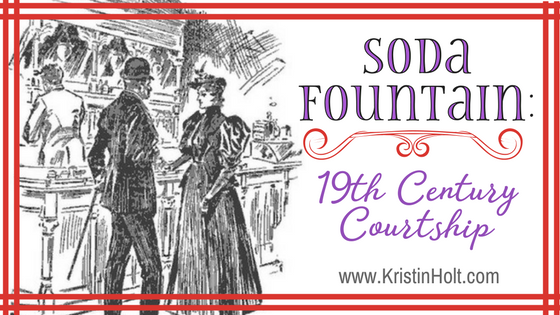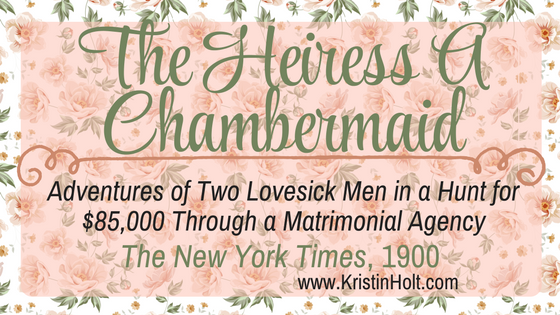
by Kristin Holt | Feb 11, 2019 | Articles
Etiquette and all that is deemed “good manners” morphs over time. Behavior that our nineteenth-century ancestors would find appropriate has largely disappeared, and today’s idea of a man’s best actions with his hat would appall our great-granddaddies. Specifically speaking, “Common Details of Western Historical Romance that are Historically Incorrect, Part 2” entails nineteenth century hat etiquette–specifically men in the company of women–and contains more vintage citations than my earlier post titled Hat Etiquette of the Victorian Era.

by Kristin Holt | Jun 27, 2018 | Articles
In context of Western Historical romances:
“May I call on you?”
“He took me on a date.”
Historically accurate… or So Not The Way Things Were? Why? How do we know?

by Kristin Holt | Jun 29, 2017 | Articles
At the Turn of the 20th Century (year 1900), the Soda Fountain was a safe and socially acceptable place for men and women to meet. Courting couples could enjoy a little semi-private time tucked in the back of the drug store sipping one Coca-Cola from two straws. Come see a vintage article written about why soda fountains foster romance, and how the Soda Men must safeguard themselves against falling for lonely maiden customers. Soda Fountains remained a courtship and dating icon from the late nineteenth century through the 1950s and beyond. What was the draw?

by Kristin Holt | Jun 16, 2017 | Articles
Scams involving fraudulent matrimonial companies abounded in the nineteenth century. Vintage newspapers often reported circumstances, chastised the foolish hearts who sent money to their correspondent, and insisted that no man or woman worth marrying needed to resort to the mail or an agency. This article, titled the same (as my post) was originally published in The New York Times, January 21, 1900, and details the circumstances of a purported “heiress”, gushing love letters on scented stationery, her two lovesick swains, the Manhattan matrimonial agency, and the judge’s decree.

by Kristin Holt | Apr 28, 2017 | Articles
An 1865 newspaper article persuades all young people to tell the truth in courtship, and attempts to convince all readers of the stark benefits, compared to disastrous tragedies, when his advice is ignored. A powerful view into Victorian history and attitudes about courtship and marriage.













